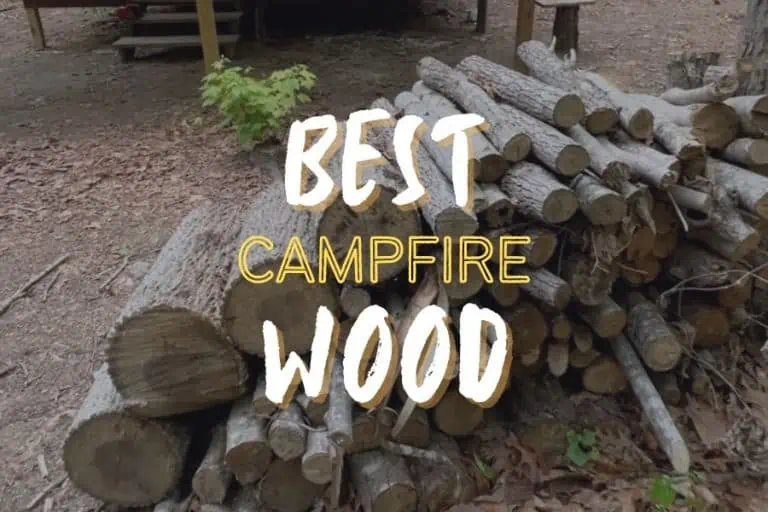A campsite isn’t complete without a crackling campfire.
Roasting marshmallows, sharing stories and staying warm around the fire are some of my favorite things about a night out camping.
But you can’t just take any old wood you find and set it alight. In fact, burning certain kinds of wood can actually be really dangerous.
In this article, you’ll find out which types of wood are the best to burn, and which types of wood to avoid burning at all costs.
Ready to find out more?
Let’s get started!
Table of Contents
Toggle8 Best Types Of Wood For A Campfire
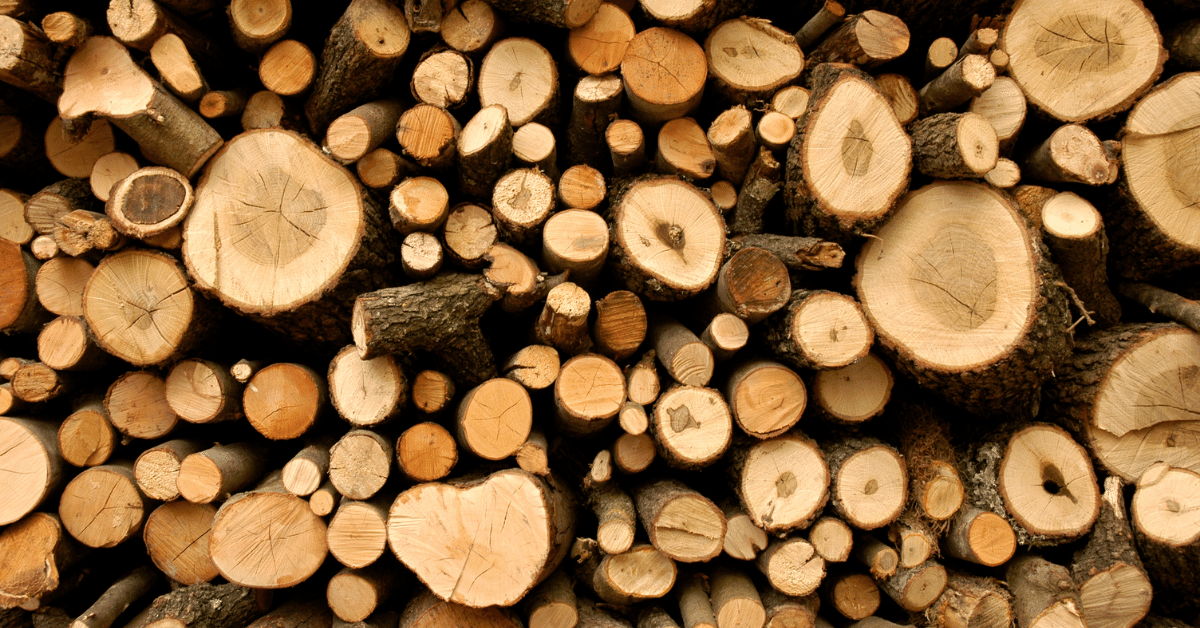
Most of the wood species that burn well are hardwood trees. Softwood burns a lot quicker, so if you want your fire to stay alive longer, hardwood is a much better choice.
Softwood is great for kindling and tinder, though.
Here are some of the best types of wood to use when you’re building a campfire:
- Ash
- Oak
- Maple
- Birch
- Hickory
- Beech
- Black Cherry
- Dogwood
Luckily, you’ll be able to find a lot of them pretty easily around the US, depending on where you are.
Ash
This is a species that’s fairly easy to find in many places throughout the US. It’s great to use as firewood, because it gives off a good amount of heat, and it has a low moisture content.
Ash wood is also fairly easy to split with a hatchet, and it doesn’t weigh too much either, even though it’s a tough hardwood.
Oak
Oak burns even slower than ash, making it an even better choice for campfire firewood.
There’s also plenty of it growing all over the US, so you shouldn’t have too much trouble finding it. There are lots of different varieties, and they all give off lots of heat, so you can’t go wrong.
Red oak is easier to split than white oak, but if you’re having a hard time you can try freezing the wood. It should be easier to split when it’s frozen.
Good things come to those who wait – and oak firewood is no exception. While most hardwoods only take a year to season, oak needs double the time to dry out properly, so just be aware of that as well.
Maple
Maple isn’t quite as dense as oak, so you’ll need to have a larger quantity, but it’s still a great option nonetheless. You can find it pretty easily, too – whether it’s sugar maple, hard maple, black maple or silver maple.
It’s easy enough to split (even with a hatchet), and it burns nice and clean. Plus, it smells absolutely lovely while it’s burning, which is a welcome bonus.
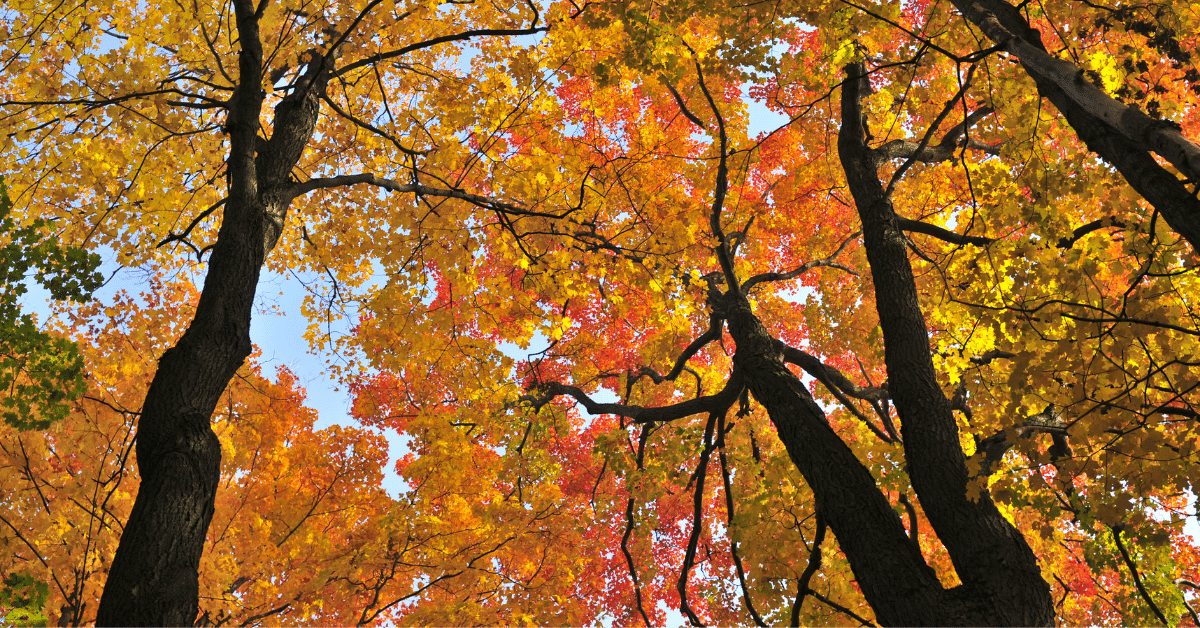
Birch
Another solid option is birch, but it does burn quite a bit quicker than other types of wood like oak.
If you’re using birch, it’s a good idea to have some other slower burning species to mix in. That way, you can keep your fire going for longer with less wood.
What’s great about birch though is that it doesn’t give off a lot of smoke, but it does give off a nice amount of heat.
Hickory
Many people argue that hickory is the best of the best when it comes to firewood.
It’s super tough, heavy and dense, so it burns nice and slow. It also gives off a fantastic aroma as it burns in the fire pit, which makes it a stellar choice for campfire cooking.
The fact that it’s so hard does make it a bit hard to split, though. You’ll definitely need a seriously good, sharp axe to get the job done.
Beech
In parts of the northeastern US, you can find beech trees that make excellent firewood.
It’s usually pretty easy to split, but some trees can be a bit of a challenge. In any case, it burns wonderfully, giving off a lot of heat and not too many sparks, or too much smoke.
Another great thing about beech trees is that the smooth, silver bark doesn’t flake off. That makes handling this type of wood a lot less messy than some other types.
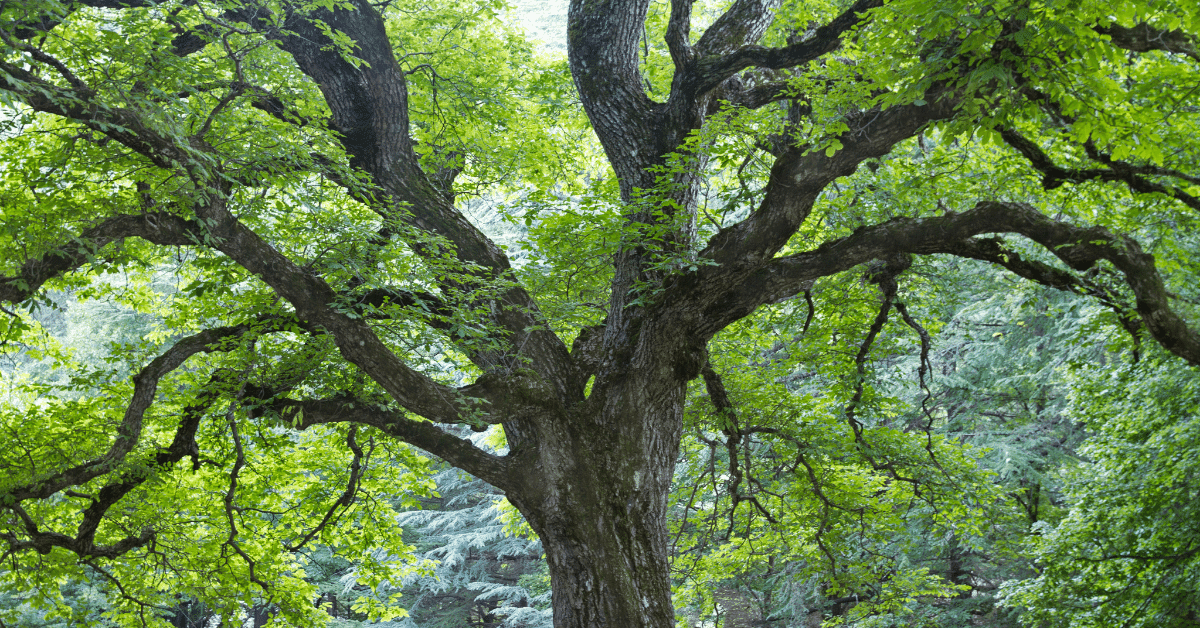
Black Cherry
You can use any kind of cherry wood as firewood, but black cherry is a bit better than other types.
Cherry wood won’t give off quite as much heat as some other types of wood like oak, maple, or hickory. It still does a lot better than softwood like pine, though.
And it sure does smell delicious while it’s burning in the fire pit. It also produces minimal smoke, which is another important quality. Overall, I’d say it’s a pretty good choice.
Dogwood
Dogwood trees are native to the eastern US and northern Mexico. The wood is super dense and heavy, making it great for firewood.
It gives off a nice amount of heat, and it has good coaling qualities. It can, however, be a bit of a challenge to split it up.
Also, these trees are pretty small. That means you won’t get a whole lot of firewood out of a single tree. And that’s despite all the time it takes to process a dogwood tree, because of how hard it is to split.
5 Types Of Wood You Should Never Burn
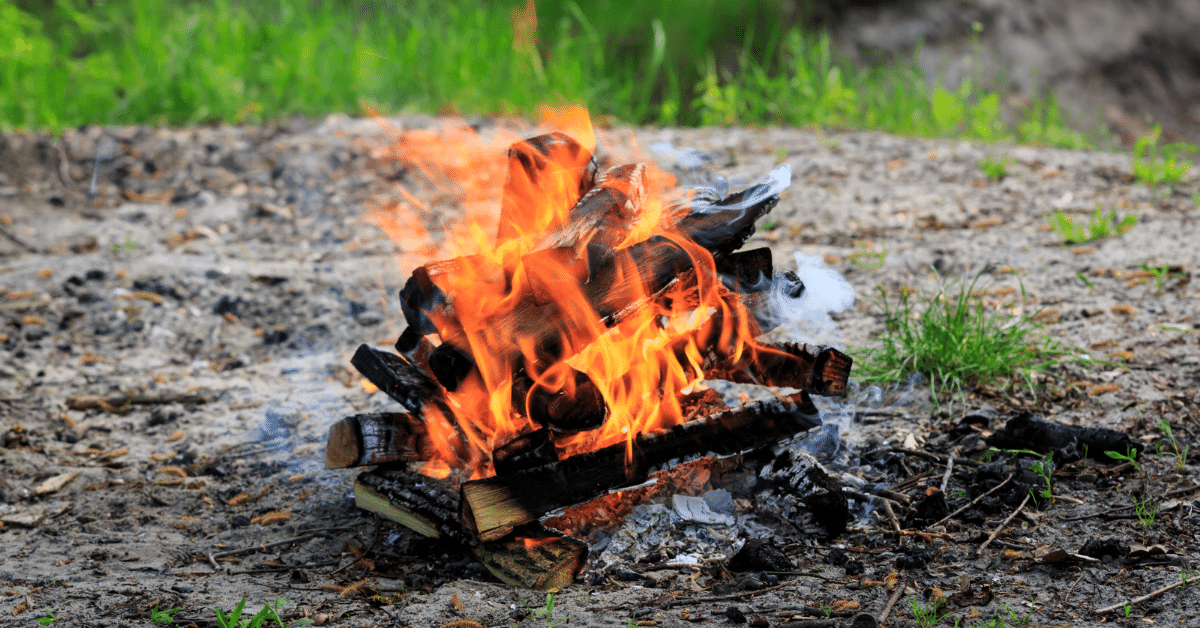
So now you know which types of wood are going to burn the best.
But, it’s also super important that you know which types of wood to avoid.
Here are the types of wood you should never burn:
- Willow
- Driftwood
- Poisonous Trees & Plants
- Endangered Species
- Any non-local wood
Certain types of wood give off toxic smoke when they burn. So you definitely want to avoid throwing those species onto the fire, or you could be putting yourself and the people around you in serious danger.
Willow
Technically you can use willow for firewood, but it’s definitely not the best choice.
Willow smells strong when you burn it, and it doesn’t produce a whole lot of heat. It also takes around 4 months to dry it out enough to be able to use it. That’s a long time to wait for subpar firewood.
If you don’t dry it out enough, it’ll give off too much smoke, suffocating and temporarily blinding anyone that comes near it. This goes for all species. Whatever you use, you have to make sure it’s properly seasoned wood.
Driftwood
A nice, big log of driftwood might seem like the perfect fuel to throw onto your beach bonfire. But in reality, driftwood releases harmful chemicals when burned, so you should never use it as firewood while you’re camping.
You see, driftwood contains a lot of salt. When this salt burns, it releases chlorine ions that can turn into dioxins and furans. Definitely not something you want to be breathing in!
Poisonous Trees & Plants
There are lots of poisonous plants out there. These include poison ivy, poison sumac, and poison oak. To be safe, I generally avoid any trees that have vines growing on them. Burning any of these poisonous plants will release dangerous, toxic smoke into the air.
The same goes for oleander. Burning any part of this plant – the flowers, leaves or branches – will create poisonous smoke. Never use oleander to fuel your fire under any circumstances.
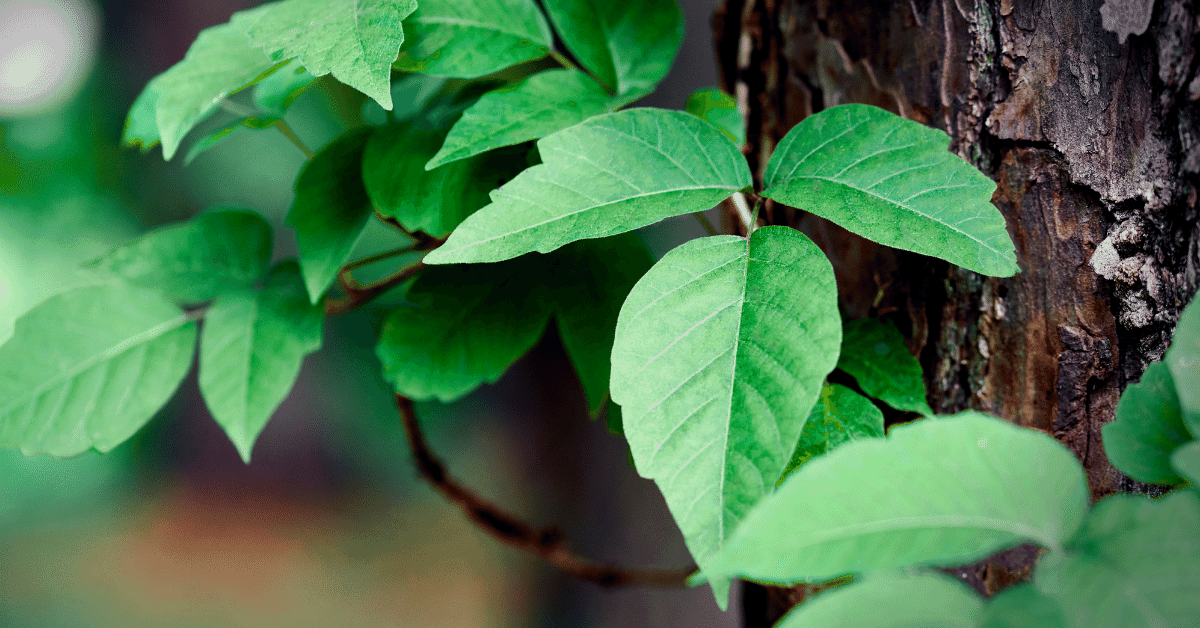
Endangered Species
And, of course, it goes without saying that you should never chop down any trees that are endangered for firewood.
Some species found in the US that are endangered include:
- Maple-leaf oak
- Boynton’s sand post oak
- Blue ash
- American chestnut
- Florida yew
- Virginia round-leaf birch
- Four-petal pawpaw
- Kentucky coffee tree
If you’re buying your firewood, you don’t have to worry. It’s highly unlikely you’ll come across any endangered trees in the firewood you find for sale. But before you go chopping any trees down, make sure you identify them first so you can be sure it isn’t an endangered species.
Non-Local Wood
Finally, you should always make sure that the firewood you use doesn’t come from more than a few miles away.
Transporting firewood over long distances is one of the main reasons invasive pests are able to wreak havoc in forests they never would’ve reached on their own.
When you’re buying firewood, don’t forget to always ask where it’s from.
Wrapping Up
Whenever you’re looking for firewood, make sure it’s hardwood, not softwood.
Any of the species I talked about will work brilliantly for a campfire, but there are plenty of other types of hardwood out there that’ll work just as well.
Always make sure that your firewood is dry enough (not green), and that it has been seasoned properly before you burn it.
Avoid driftwood, non-local wood, endangered species, and poisonous trees and plants.
Once you’ve found your firewood, it’s time to build that campfire or bonfire. If you want to learn how you can follow the easy steps in this article we wrote.
You’ll be roasting marshmallows in no time!
Also See:


